We’ve Got a Friend in You
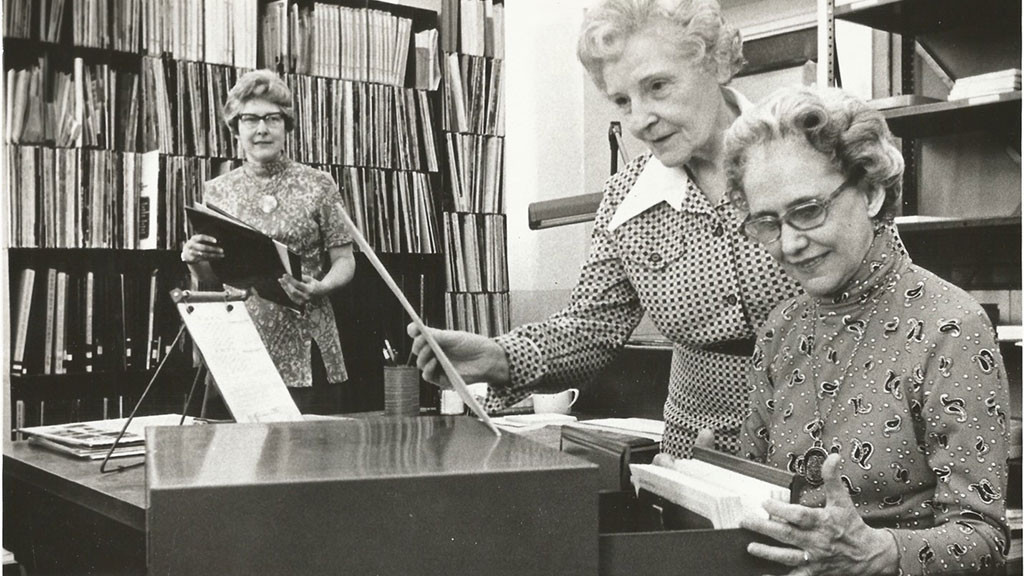
Early Friends of WILL volunteers. From left to right: Catherine Yancey, Josephine Kirby, and Alice Taylor.
It’s November, and for many of us, it’s the time of year when we stop to give thanks—thanks for our families, our friends, the food on our table, the roof above our heads. Here at Illinois Public Media, November is also the month when we celebrate our supporters: the loyal Friends of WILL. Three years ago, we celebrated the 45th anniversary of the Friends of WILL. In this our centenary year, let us once again revisit how the Friends came to be and how those first volunteers helped expand WILL’s outreach, creating a platform for the central Illinois community to invest in our future.
The year was 1974. America was reckoning with the aftermath of the 1973 oil crisis, which had led to excessive inflation. The costs associated with broadcasting had shot up, and even with the University’s funding and newly won federal support for public broadcasting, WILL could not keep up.
But WILL was not alone in this struggle. Even though the Public Broadcasting Act of 1967 created the Corporation for Public Broadcasting, its federal funding was still under threat under the Nixon administration. (You may remember how Fred Rogers famously testified before the Senate Subcommittee on Communications and convinced them to not cut funding in 1969.) The National Friends of Public Broadcasting (NFPB), a national network of public media volunteers and volunteer coordinators, was established in 1971 to support public broadcasting’s mission of producing quality educational and cultural programming. The NFPB held annual conferences to recruit and train new volunteer coordinators for stations around the country.
The newly appointed Director of Broadcasting at WILL, Donald P. Mullally, had an idea to create a local Friends organization for WILL. However, due to Illinois statutes, a formal nonprofit organization could not be established for this purpose because WILL is a unit of a state university. So, Mullally approached the American Association of University Women (AAUW) about creating an informal group of volunteers that would help the station expand and enrich its offerings by donating their time, money, and talents.
Now, the AAUW was no stranger to WILL. From 1951, the organization had partnered with other civic-minded women’s groups such as the Daughters of the American Revolution and League of Women Voters to present a program on WILL-AM called “Dear Madam.” The show, which ran semi-regularly until 1977, illustrated what women’s groups in the area were doing to better the community.
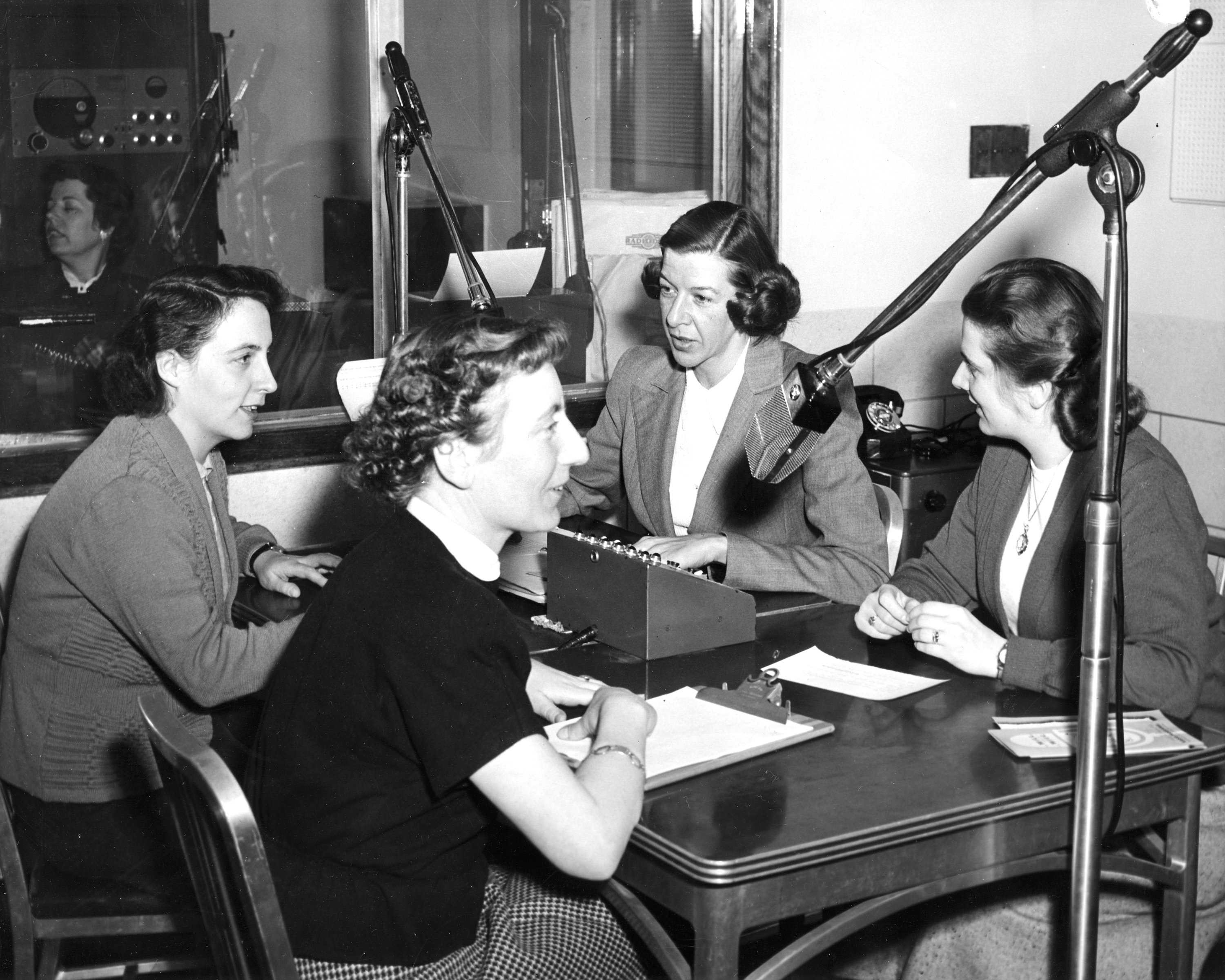
A taping of radio show “Dear Madam” with members from a local women’s group
Members of the AAUW sat down with Mullally in the old WILL radio studios in Gregory Hall to hash out the plans. He also sent volunteer Catherine Yancey to NPR’s national conference in the spring of 1974 to see how they could use the ideas of other Friends organizations and tailor them to the specific needs of WILL. She wrote of her experience, “Of the many people I met during the NPR 1974 conference in Washington, none come on with more interest, more enthusiasm and more dedication to public radio than the small, valiant band of National Friends of Public Broadcasting. This group of 8 people, representing some 15,000 fellow Friends, came from a variety of stations. At the Friends workshop I gathered information to help form a group of Friends suitable to the needs of WILL-AM-FM-TV.”
To solicit funds from the public, the newly formed Friends of WILL decided to host on-air pledge drives. Though we are now well-versed in such fundraising tactics, it was a relatively new concept. By contributing $10 or more, you became a Friend of WILL and received a year’s subscription to Patterns, a new monthly program guide magazine in a convenient, pocket-sized format. (Though WILL had published and distributed barebones program guides for over 30 years as a free service, Patterns included more articles and exclusive content about the station and public broadcasting at large. It also provided a sense of community for its readers.) Those who contributed $25 or more could select from gifts of books or records (no tote bags or coffee mugs quite yet). The first pledge drive for WILL-AM that June garnered $12,236 in pledges from 513 people. Pledges streamed in from across the listening area, including as far as east as Indianapolis, Indiana, as far north as Kenosha, Wisconsin, and as far west as Lawrence, Kansas.
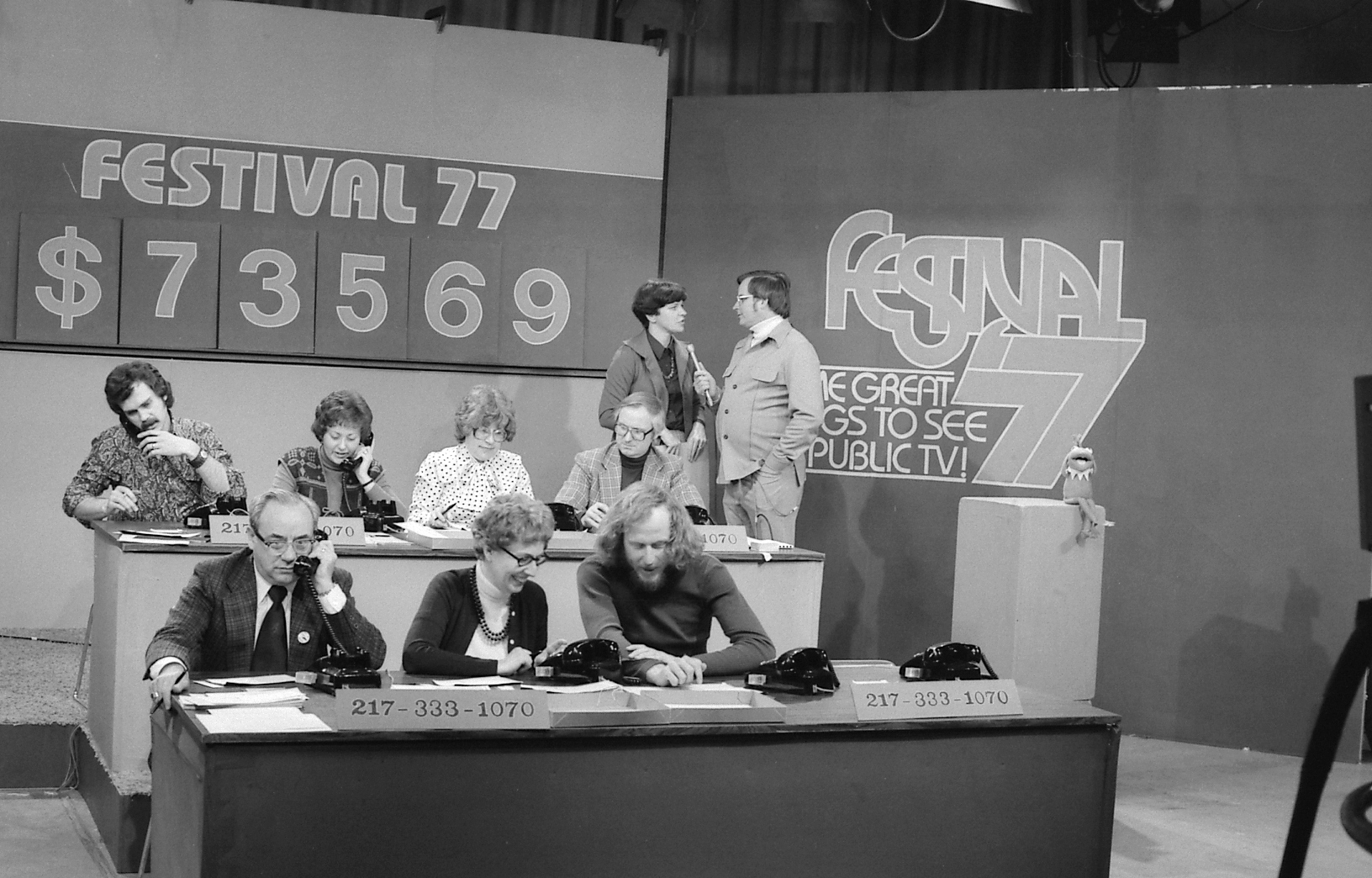
A pledge drive in 1977 with Debbie Day (standing)
WILL-TV held its first television pledge drive the following month, netting over $15,000 in pledges. After two more fundraising drives that year, WILL had secured over $55,000 in pledges. For context, that’s over $330,000 in today’s money. The donated funds were used to underwrite new programs, update equipment, hire staff, and expand the classical music library.
The Friends of WILL grew from a handful of ardent advocates of public broadcasting to 2,000 supporters in the first five months. This growth meant they needed some direction. One day, then-Friends president Elaine Peppers was sitting in Debbie Day’s kitchen. They were both members of the AAUW and were working on an AAUW media study when Peppers asked Day, “Do you know anyone who’d like to work half-time at WILL, coordinating the Friends group?” For Day, a former high school English teacher with extensive experience volunteering for numerous causes, it turned out to be a perfect fit.
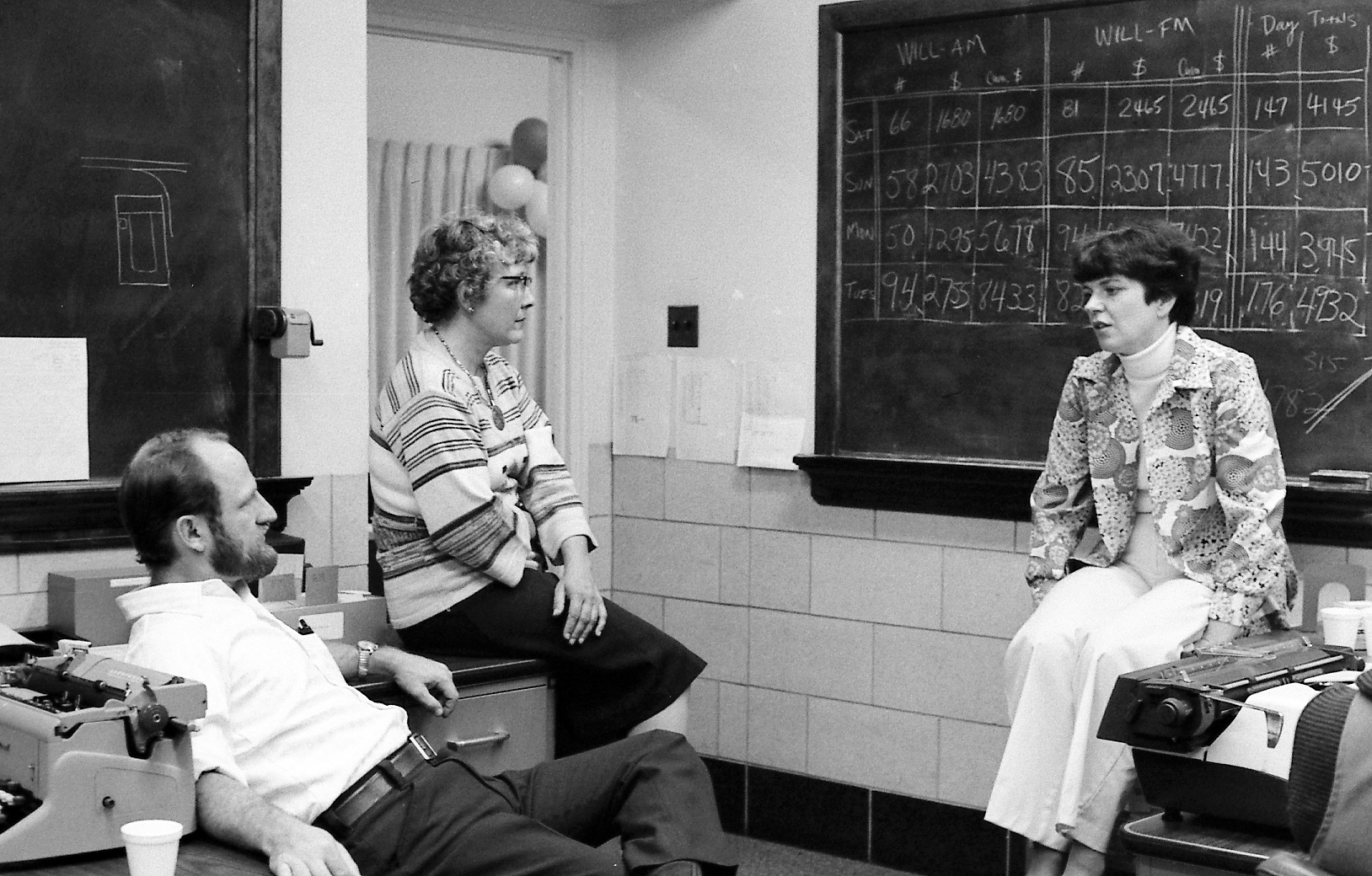
WILL Development Director Debbie Day and Volunteer Coordinator Catherine Yancey meet to discuss a pledge drive in 1977
As the coordinator of the Friends of WILL, Day recruited and organized the volunteers who made the pledge drives happen. Volunteers answered the phones, processed contributions, put mailing labels on issues of Patterns, cheerfully chatted with donors, and provided enthusiastic encouragement to staff throughout the drives. Day later went on to serve as director of development, a position she held for 30 years until her retirement in 2006. See the video below for Debbie Day's reminiscence of those early pledge drives.
Over the last 48 years, the vital annual support from the Friends of WILL has grown from those first few thousand dollars in pledges to more than $2.5 million in the 2022 fiscal year. Many long-time Friends have made extra or planned gifts for special projects, including those listed in Friends Plaza, for their support of the construction of Campbell Hall. The Friends of WILL currently includes more than 12,000 individuals, families, and businesses who contribute each year. Hundreds of volunteers have also provided their energy, creative ideas, and special talents to supporting this station. In addition to being a mainstay in the of pledge drive telephone banks for many years, volunteers have helped organize and run special fundraising events, such as concerts in the park and vintage vinyl resale events. They have also been spokespeople for WILL on and off the air, served on the Community Advisory board, read books as part of the Book Mentor program, cataloged records in the music library, given station tours, and much, much more.
The Legacy of Don Mullally
The lessons Mullally learned in establishing the Friends of WILL would go on to serve him on the national stage. Mullally was a pioneer of public radio whose tenacity and vision not only brought WILL into the 21st century but also saved NPR from the brink of bankruptcy.
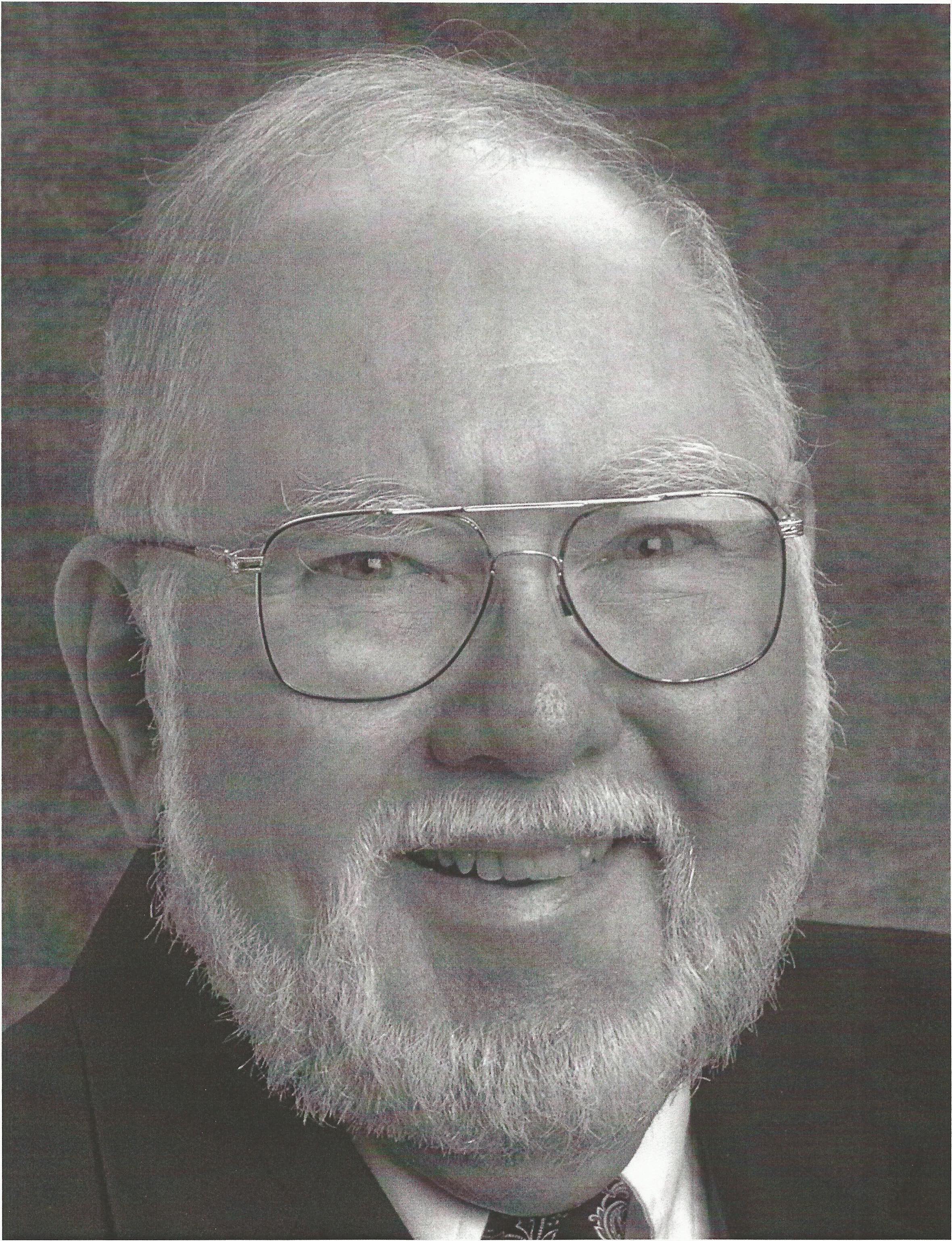
Former Director of Broadcasting Donald P. Mullally
First, a little context: NPR was incorporated in February 1970, providing 90 radio stations with national news programming. By 1977, the number of member stations had more than doubled. In 1980, NPR launched the first nationwide satellite radio distribution network. As a result, demand for its programs skyrocketed. However, NPR was not equipped to handle this sudden growth from being “alternative” media to “mainstream” media. By 1983, it found itself in dire financial straits.
Mullally’s reputation for success at WILL proceeded him. In 1983, he was tapped for the position of chair of NPR’s Board of Directors. Mullally had to make some tough decisions to balance the books, both in the short term and in the long term. To immediately stabilize the budget, he led a nationwide fundraising drive called “The Drive to Survive,” modeled after the fundraising drives held at WILL. Then he devised a new funding structure for NPR where federal funds would now go directly to member stations that would buy programming from NPR, and NPR would seek out large private donors. This system ensured a steady revenue stream for NPR while also giving local stations more autonomy over their own programming so they could cater specifically to their area. Mullally’s vision marked a turning point in how public broadcasting is funded, and this symbiotic structure he created is still in place today.
